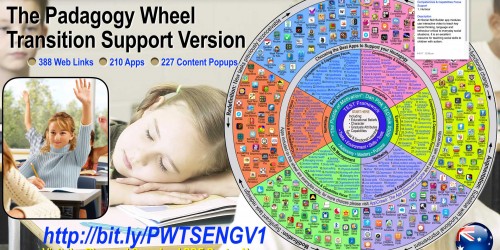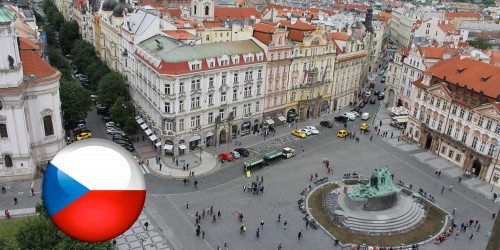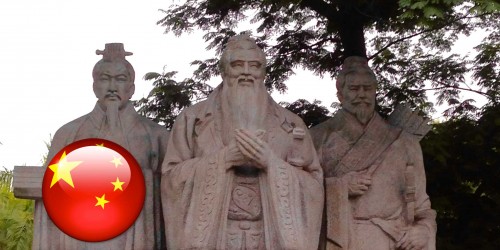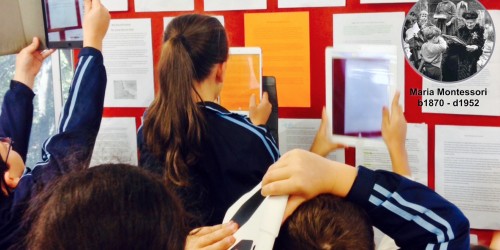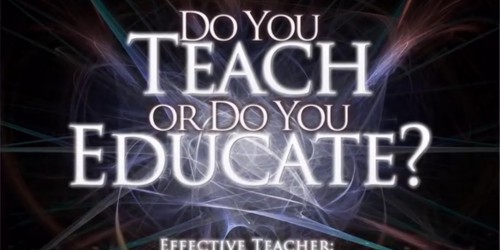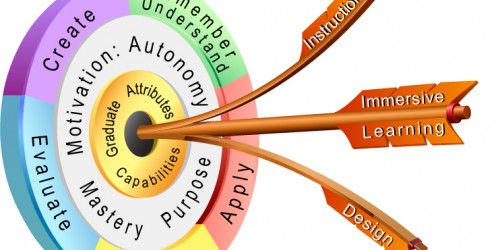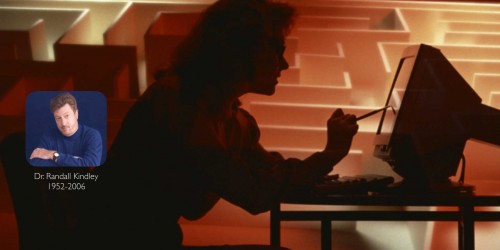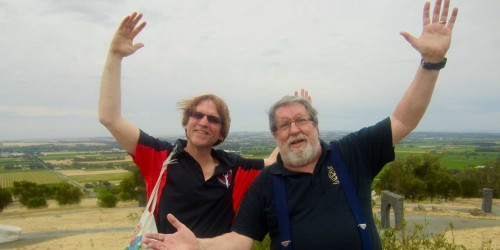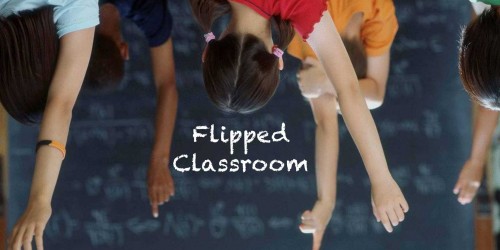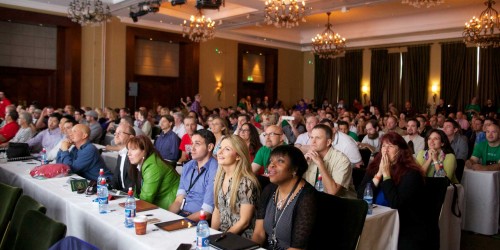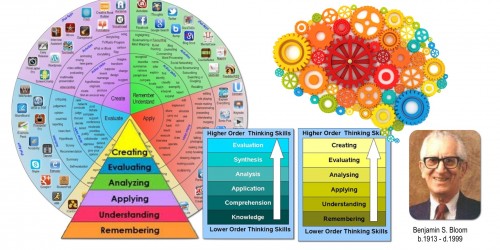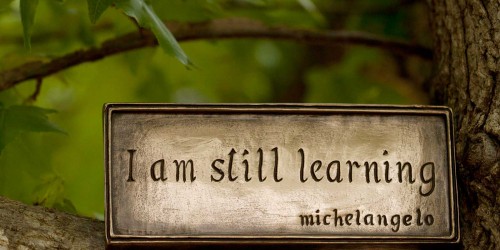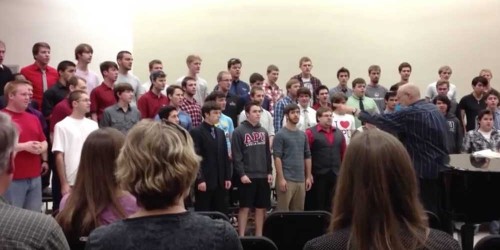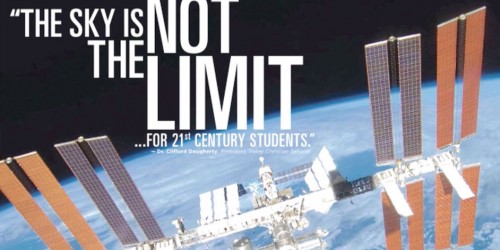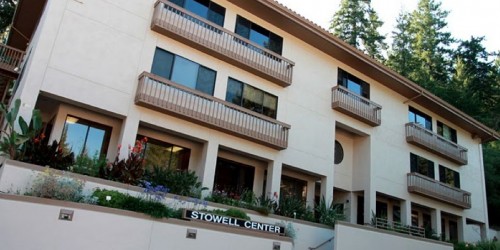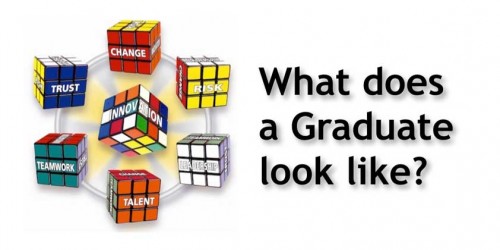This information was originally needed in this detail to support my nomination for an Australian National Office for Learning and Teaching (OLT) Citation which I subsequently was awarded in 2012 Details of this award can be seen on this web page
 The concept of life-long learning became personal in 1998. After thirteen years of running my own printing and publishing business, and another nine years leading a course at the University of the Nations, part of Youth With A Mission (YWAM), I was able to return to university as a student. It was to gain two masters degrees: one in interactive multimedia and the other in education (majoring in online). For most of my working life, I have been a pioneer, innovative, an individual who can generate good ideas and someone who can transfer vision to others. In 2003 when I applied for my current job, my career objectives were:
The concept of life-long learning became personal in 1998. After thirteen years of running my own printing and publishing business, and another nine years leading a course at the University of the Nations, part of Youth With A Mission (YWAM), I was able to return to university as a student. It was to gain two masters degrees: one in interactive multimedia and the other in education (majoring in online). For most of my working life, I have been a pioneer, innovative, an individual who can generate good ideas and someone who can transfer vision to others. In 2003 when I applied for my current job, my career objectives were:
“To research and pioneer effective virtual learning communities and help them meet their stated objectives. I would like to help people develop their potential and fulfil their destiny through deep, life-long learning. I intend to stay on the edge of the revolution in education and information management. I will develop and apply the latest learning design strategies to build creative curriculum, which when delivered using the latest web based and interactive multimedia technologies, will provide life changing educational opportunities for those participating”.
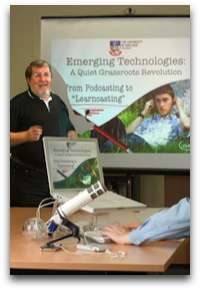 In the ten years I worked at the University of Adelaide, I believe I have used my strengths and consistently reached my career goals. My task has always been to support the teaching faculty, to help them increase student engagement, enrich the student experience and achieve better learning outcomes. For years I have joked with those academics I am helping that my success “is making them not only look good, but to teach well and get excellent SELTS.” I have been the silent partner in helping some very skilled and gifted teachers achieve quite a few citations, awards and grants. This recognition has been both internal and at national ALTC level.
In the ten years I worked at the University of Adelaide, I believe I have used my strengths and consistently reached my career goals. My task has always been to support the teaching faculty, to help them increase student engagement, enrich the student experience and achieve better learning outcomes. For years I have joked with those academics I am helping that my success “is making them not only look good, but to teach well and get excellent SELTS.” I have been the silent partner in helping some very skilled and gifted teachers achieve quite a few citations, awards and grants. This recognition has been both internal and at national ALTC level.
Since I commenced employment, I have been working in an environment that aimed not to produce output itself for use in Learning and Teaching (L&T), but to inspire and equip the teaching faculty to do it for themselves. My job is to transfer skills and vision and show academics alternative ways to interact with their students and improve learning outcomes. In June 2011 I developed a workshop entitled “It’s All About the Students”. Forty academics attended and agreed with me about the importance of the Students, and many committed to pilot the pedagogies and technologies I recommended such as the Learning Activity Management System (LAMS)
In 2007 as a result of PDR discussions with the Centre Director, Professor Geoff Crisp, we decided I should focus on elearning conference engagements. I have been very successful in an ambassadorial role for the University internationally in the field of technological learning spaces that promote student centeredness. I have been a keynote speaker at national L&T conferences (eg Brisbane 2009) and have had a high profile presence at many conferences in the USA, Singapore and UK. The success of my model of educational podcasting has enabled me to achieve Apple Distinguished Educator (ADE) status and interview over 150 academics from many universities on how technology has changed the way they teach. This has not only helped other universities appreciate our leading edge work in elearning, but has also led to some valuable collaborative efforts and invitations to run seminars and workshops in specialised areas such as using iPads for Higher Education across Australia and New Zealand, with interest from other countries.
Apple Distinguished Educator Class of 2009
This webcast is of my Podcast Programme Episode which supported my application. It explains my model for educational podcasting.
My work worldview has always included servant leadership and this concept is so important to being an effective support person in any university. A servant leader contributes to the well being of people and community and looks to the needs of the people. I have always asked people how I can help them to solve problems and promote personal development. I also have been successful in cross-disciplinary networking and helping creative people connect. A recent highlight has been helping an academic from Veterinary Science develop a scenario-based learning sequence about a virtual patient – the patient being a horse and the student a vet. I then helped an academic in Law pick this process up, change the patient to a client and the vet to a lawyer and get a powerful lesson model for their discipline. That is what I call “breadth of impact”.
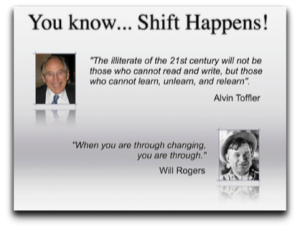 Another concept that resonates with academics is the “Continuum of Shift. This is a concept I use to help teachers understand how to move from content centered teaching to activity centered, from teacher centered to student centered. Every pedagogical approach and supporting elearning technology that I introduce and teach is designed to empower the student to more effectively engage and build knowledge.
Another concept that resonates with academics is the “Continuum of Shift. This is a concept I use to help teachers understand how to move from content centered teaching to activity centered, from teacher centered to student centered. Every pedagogical approach and supporting elearning technology that I introduce and teach is designed to empower the student to more effectively engage and build knowledge.
The social constructivist approach is about showing both teachers and students that they are on a journey together and more is achieved if they build knowledge together. I don’t interact with the students – to them I am invisible. I transfer this vision to the teachers – when they implement and enrich the student experience, I have done my job.
A ll my adult life I have lived by the creed “there is always a better way”! That is how I approach every aspect of my work. I am not a details person; I am a big picture pioneer. However I have very clear objectives, i.e. to stay informed about the most recent best practice in teaching, using the most useful technologies available and transferring this vision to the teaching faculty to maximise student outcomes. There is very little work-to-personal life split – I like it that way. I spend many hours searching and connecting online with hundreds of people … my Skype contact list is 300+ with networks to teachers and educators, giving me very early alerts to exemplar practice and technologies. I am always aware of the majority world (it used to be called the developing world) and all pedagogy and technology must make it through the grid of ‘is it workable there’ to be considered. Vision transfer and inspiration are two drivers that guide how I co-ordinate and implement L&T strategies across the university. Seminars are one of my main channels of implementation as well as personal mentoring to interested academics.
 I measure my success by the success of those I help. I inform them of best practice, encourage them to innovate and empower them with the technologies and support they need to succeed. I consider my job done when someone like Assoc. Lecturer Clinton Kempster from the School of Dentistry acknowledges my contribution to help him “push the envelope”, says:
I measure my success by the success of those I help. I inform them of best practice, encourage them to innovate and empower them with the technologies and support they need to succeed. I consider my job done when someone like Assoc. Lecturer Clinton Kempster from the School of Dentistry acknowledges my contribution to help him “push the envelope”, says:
“You have been fundamental in providing me with the motivation, knowledge, tools, confidence and evidence to show that we can and should challenge ourselves to look at new ways to teach and engage”.
 One of the most memorable initiatives of my time here at Adelaide commenced with coffee. Sheila Kavanagh OAM, then a lecturer from the Discipline of Nursing and now the President of the Australia NZ Burns Association began to share her passion to never again have burns nurses experience a disaster without adequate planning. This was learnt from the lack of planning that was a huge obstacle in 2002 when the Bali Disaster killed 202 people with a further 240 injured, many with significant burns. Quickly we brainstormed the question: What is the best way to train people for such an emergency? At the time I was collaborating online with Dr Randall Kindley from the USA and exploring Scenario Based Learning. Randall was a pioneer in this new form of instructional design and offered to help Sheila and I develop an experience to immerse burns nurses in the disaster planning for burns patient care.
One of the most memorable initiatives of my time here at Adelaide commenced with coffee. Sheila Kavanagh OAM, then a lecturer from the Discipline of Nursing and now the President of the Australia NZ Burns Association began to share her passion to never again have burns nurses experience a disaster without adequate planning. This was learnt from the lack of planning that was a huge obstacle in 2002 when the Bali Disaster killed 202 people with a further 240 injured, many with significant burns. Quickly we brainstormed the question: What is the best way to train people for such an emergency? At the time I was collaborating online with Dr Randall Kindley from the USA and exploring Scenario Based Learning. Randall was a pioneer in this new form of instructional design and offered to help Sheila and I develop an experience to immerse burns nurses in the disaster planning for burns patient care.
We interrupt this program!
We commenced the planning sessions in the Discipline of Nursing and I was the sounding board, facilitator, and learning designer. Sheila was the subject matter expert and we spent many hours developing scenarios as this immersive learning experience took shape. It was truly authentic curriculum development and at times we needed breaks to release the adrenaline building up as Sheila re-lived Bali, where she was awarded the Order of Australia medal for her nursing work. One highlight was when I “sold” Channel Nine the idea of providing free of charge video clips of simulated newsbreaks, so realistic they had to be labeled “training purposes” to avoid the problem “War of the Worlds” had in 1938.
At the time CLPD was working with Professor Holger Maier of School of Civil Environmental and Mining Engineering, who was further developing and running the nationally awarded Mekong eSim. Sheila adapted some of the model of the Mekong role-play, added scenarios and Through the Fire a Disaster Downunder eSim was born.
Randall Kindley Visit and a University Wide Situational Learning initiative
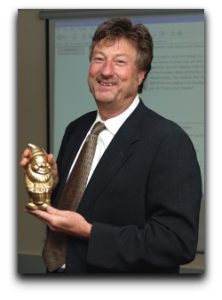 The success of both eSims made it possible for me to organize the visit to Adelaide of Dr. Randall Kindley to teach Scenario-based Learning to a wide audience from all three educational sectors K-12, VET and HE. This subsequently led to a successful application for $100,000 in joint funding for situational learning from the University’s Learning and Teaching Development Grant Scheme and the Faculty of Engineering, Computing and Mathematical Sciences.
The success of both eSims made it possible for me to organize the visit to Adelaide of Dr. Randall Kindley to teach Scenario-based Learning to a wide audience from all three educational sectors K-12, VET and HE. This subsequently led to a successful application for $100,000 in joint funding for situational learning from the University’s Learning and Teaching Development Grant Scheme and the Faculty of Engineering, Computing and Mathematical Sciences.
This funded an initiative to develop an online situational learning cluster across the University and to promote further online role-play simulations and scenario-based learning. Meanwhile the Situational Learning team from here and the USA were presenting on the subject nationally and internationally.
Dr Randall Kindley died unexpectedly from a heart attack in May 2006. The Online Learning Team in the CLPD have missed him and his creative energy a great deal.
Authentic Lesson Design
Ms Jill Clausen, Clinical Lecturer from the School of Nursing, who currently runs the eSim, reports it has now run seven times since 2004, with 85 students immersed in it. Jill reports that student comments have always been positive. However, the best feedback came from Margaret Conaglen, a Christchurch student who was doing the eSim when an earthquake hit in 2010:
 “We have lost a home but all my family is fine and we are counting our blessings. I wanted to let you know how often I thought about the “Disaster Down Under eSim” and how incredibly relevant it has been to the situation here at the hospital over the past week. Just about everything covered in the eSim played out here – including rapid patient transfers, mis-communication, gaining extra dressing supplies, sneaky media and staff burn out avoidance. The only difference of course was no burn injuries – just lots of trauma. I have to say our hospital did an amazing job and our ward coped very well.”
“We have lost a home but all my family is fine and we are counting our blessings. I wanted to let you know how often I thought about the “Disaster Down Under eSim” and how incredibly relevant it has been to the situation here at the hospital over the past week. Just about everything covered in the eSim played out here – including rapid patient transfers, mis-communication, gaining extra dressing supplies, sneaky media and staff burn out avoidance. The only difference of course was no burn injuries – just lots of trauma. I have to say our hospital did an amazing job and our ward coped very well.”
Margaret Conaglen
My objectives as a learning designer are to introduce teaching staff to best practice and help them explore pedagogies and technologies to give students the best learning experience with the best possible outcomes. Assoc. Prof Mark Jaksa of the School of Civil Environmental and Mining Engineering thinks so and has said it this way:
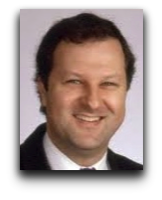 “Allan has effected enormous, positive systemic change at the University of Adelaide and one cannot overstate his immense contribution. I liken him to a plutonium atom, which sparks a nuclear chain reaction. From his energy, enthusiasm and considerable expertise emanates the encouragement for others to explore new learning and teaching paradigms and technologies. Allan gently encourages his ‘disciples’ to ‘dip one’s toe’ into this technological pool or that pedagogical pool, with the guarantee that “the students will love you for it.”
“Allan has effected enormous, positive systemic change at the University of Adelaide and one cannot overstate his immense contribution. I liken him to a plutonium atom, which sparks a nuclear chain reaction. From his energy, enthusiasm and considerable expertise emanates the encouragement for others to explore new learning and teaching paradigms and technologies. Allan gently encourages his ‘disciples’ to ‘dip one’s toe’ into this technological pool or that pedagogical pool, with the guarantee that “the students will love you for it.”
Mark Jaksa
Other teaching staff also bear witness to my involvement in their teaching awards, successful grant applications and exemplary SELTS, is further testimony that I have achieved my goals.
Please do not tell anybody who said this OK?” said the student opposite. “I have signed a confidentiality agreement, so I promise” was my reply. There was some nervousness in the room now as the student continued,“I have to ask; please, please, get Sophie and Cathy to ask Professor (name withheld) and Doctor (name withheld) to teach like this, I would learn so much more”. There were very positive confirmations coming now from all the other students, this was not the first time I had heard such comments. This was the second year in a row of facilitating a post-course focus group for Ms. Sophie Karanicolas and Ms. Cathy Snelling, Senior Lecturers in the School of Dentistry and winners of the 2010 Team Teaching Award for the Stephen Cole the Elder Prize for Excellence in Teaching and the Vice-Chancellor’s teaching prize. For both years, with two different student cohorts and at least four different teachers named – but it was the same request. We were getting some clear signals of student need.
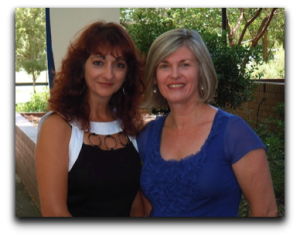 Ms. Sophie Karanicholas and Ms. Cathy Snelling are Senior Lecturers School of Dentistry and winners of the 2010-2011 Team Teaching Award for the Stephen Cole the Elder Prize for Excellence in Teaching and the Vice-Chancellor’s teaching prize. Since the ILMs, (also referred to as Interactive Online Learning Modules IOLMs) were implemented by Sophie and Cathy in 2008, there has been an average of 95% completion rate of each class of 36 students. There is a Summary document for download of the qualitative data that has been collected on the students’ views between 2008-10 via formal student feedback surveys and focus groups, as well as unsolicited emails.
Ms. Sophie Karanicholas and Ms. Cathy Snelling are Senior Lecturers School of Dentistry and winners of the 2010-2011 Team Teaching Award for the Stephen Cole the Elder Prize for Excellence in Teaching and the Vice-Chancellor’s teaching prize. Since the ILMs, (also referred to as Interactive Online Learning Modules IOLMs) were implemented by Sophie and Cathy in 2008, there has been an average of 95% completion rate of each class of 36 students. There is a Summary document for download of the qualitative data that has been collected on the students’ views between 2008-10 via formal student feedback surveys and focus groups, as well as unsolicited emails.
Just in Time Teaching (JiTT) and Interactive Learning Modules (ILMs)
It all started with the Graduate Certificate in Online Learning (HE). Sophie and Cathy were in the first wave of graduates, and as I developed the majority of the curriculum and taught in it, we got to know each other very well. Their passion for their students was obvious so I challenged them with:
 “What if I could take 30-40% of your face-to-face lecture content and package it up and deliver it to your students using elearning technology, would you be interested?”
“What if I could take 30-40% of your face-to-face lecture content and package it up and deliver it to your students using elearning technology, would you be interested?”
Before they had a chance to respond I continued, “But wait there’s more, and what if I could add formative assessment and then diagnostic assessment as well and then get the results back to you ‘just in time’ so you know what they know, as well as what they don’t know and you can change what you teach them face-to-face so you achieve better learning outcomes… now would you be interested”?
Their answer began a journey that has made history at the University of Adelaide. Their award is the first time the Elder teaching award and VC’s teaching prize has been given to a team. They embraced Just in Time Teaching (JiTT) and under my mentoring they begun building Interactive Learning Modules (ILM’s). In 2006 I introduced them (and the rest of the University) to the rapid elearning deployment software called Articulate and they have been making ILMs ever since with great success. Students have responded positively to this style of teaching and it is reflected in improvements in their grades.
Sophie and Cathy share about the grades
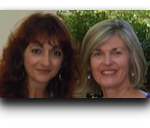 “Using comparative assessment metrics, the class average for the final exam has increased slightly from 67% in 2007, pre ILMs, to an average of 72% from 2008-2010 post ILMs. However, the most significant impact has been witnessed in the student progression rates. The failure rate pre ILMs for the semester 2 exam was 15% in 2007, decreasing to an average of 6% between the years of 2008-2010 and possibly signifying that the ILMs have made the biggest impact on those students who have traditionally struggled with the content.”
“Using comparative assessment metrics, the class average for the final exam has increased slightly from 67% in 2007, pre ILMs, to an average of 72% from 2008-2010 post ILMs. However, the most significant impact has been witnessed in the student progression rates. The failure rate pre ILMs for the semester 2 exam was 15% in 2007, decreasing to an average of 6% between the years of 2008-2010 and possibly signifying that the ILMs have made the biggest impact on those students who have traditionally struggled with the content.”
Students report they now find the hardest part of the course, Embryology, much easier. JiTT and ILMs are the methods Sophie and Cathy have used to turn it around in the minds of the students. Another indicator of the success in a student’s perception of a pedagogical approach is when they come to the teacher and ask to use the same approach to present their research assignments for grading. Students now are using ILM’s as well as the teachers… to a learning designer that is quite a success indicator.
The Interactive Learning Modules “Bug”
About the same time Sophie and Cathy were pioneering ILMs, Professor. Holger Maier was in our online team office as we were working on the Mekong eSim. I shared the JiTT concepts and introduced him to Articulate software and explained how it works. Holger went back to his office and purchased the software the same day, then worked night and day to build 25 ILMs. He pulled all the content out of his course and re-packaged in it this way and turned his course into Problem Based Learning (PBL).
I really didn’t appreciate the impact these events have had on ECMS until it was recently highlighted to me by Mark Jaksa.. I introduced Prof Holger Maier – the University of Adelaide’s most celebrated teacher – to both JiTT and Articulate. Holger then introduced this pedagogy and tool to his colleagues Mark being one of them, as well as to the academic staff of the Faculty of ECMS. Mark continues with his earlier theme of a “plutonium atom” Will I ever live that down? My wife is calling me “Pluto”!
 “In terms of a nuclear reaction leading to systemic change, let me give you an example. Allan introduced Prof Holger Maier – the University of Adelaide’s most celebrated teacher – to both Just-in-Time Teaching (JiTT) and the development and use of Flash-based, online multimedia tools, such as Articulate. Holger then introduced this pedagogy and tool to his colleagues, myself being one of them, as well as to the academic staff of the Faculty of ECMS. From both Allan and Holger, I, too, have ‘seen the light’, which has encouraged me to incorporate both of these aspects in my teaching and courses. Some pilot work, which I undertook last year, resulted in very positive feedback from the student body, where more than 80% of the students felt that the Articulate-based modules improved their learning”.
“In terms of a nuclear reaction leading to systemic change, let me give you an example. Allan introduced Prof Holger Maier – the University of Adelaide’s most celebrated teacher – to both Just-in-Time Teaching (JiTT) and the development and use of Flash-based, online multimedia tools, such as Articulate. Holger then introduced this pedagogy and tool to his colleagues, myself being one of them, as well as to the academic staff of the Faculty of ECMS. From both Allan and Holger, I, too, have ‘seen the light’, which has encouraged me to incorporate both of these aspects in my teaching and courses. Some pilot work, which I undertook last year, resulted in very positive feedback from the student body, where more than 80% of the students felt that the Articulate-based modules improved their learning”.
Mark Jaksa
In early July, 2011 Mark was advised that he and some like-minded colleagues from around Australia have received a $199,000 ALTC grant to develop this JiTT/Articulate-based concept to effect systemic change in soil engineering laboratory classes in Australia and globally. I am part of the team to help them ensure that they deliver quality outcomes
Pharmacology and the Final Word from the students of Oral Health
Wait….but there’s more! I introduced Dr Abdallah Salem of Pharmacology to this JiTT/Articulate model when he received a L&T Implementation grant in 2009-10 to use Articulate to integrate functionalities available within MyUni. The aim was to develop online workshop assessment materials which were both formative and summative online assessment. Abdallah reported there were quite a few positive comments about the Articulate modules when students were asked the open ended question, “What was the best aspects of the course”.
However, the final word on JiTT and ILMs is from the students. We have now shifted the emphasis from teacher centric to student centric and we are calling the pedagogy Effective Pre Lecture Engagement (EPLE). Please hear the students themselves talk about how much they appreciate ILMs. How they consolidate the knowledge with Checkpoints (short frequent formative quizzes) and they reinforce the key concepts. Another says they build self-confidence and they want the majority of their lectures as ILMs. A great final comment from the student is – “they work for me”.
An Insight into Practice: Using Wimba Voice to help students master their instruments
Music to my ears … literally: Now for something completely different. Associate. Prof. Elizabeth Koch OAM, Head of Woodwind, Elder Conservatorium of Music, was faced with a challenge: “How can I get into the practice head-space of my students? How can I be there to help and mentor them as they practice?” After much coffee and brainstorming, we had a plan.
Recording the practice and getting it to the teacher quickly for reflection and feedback seemed insurmountable to Liz and students. I had introduced Wimba Voice tools (now in MyUni) to the University of Adelaide a few years before. We creatively used the voice email tool and with a little instructional help from me, those incredibly gifted musicians started to see new uses for their computers and their smart phones. I was excited to be working with Liz and was thrilled to support her ALTC Award for Teaching Excellence in 2010
This pedagogy using technology helped Liz win her award. We used the US Drill Team to help the students understand mind muscle and the importance of practice. The military call it drilling to develop the correct instantaneous actions. A presentation on YouTube has a lot of valuable student feedback quotes and Rhiannon a Year 2 Saxophone student sums up my involvement:
 “I should also mention that I think we’re all also very grateful to Allan for setting this up for us and making it so surprisingly easy to use! I will admit when you first told us that this would be happening I was extremely daunted and was not looking forward to figuring it all out but now I am quite looking forward to the next time! I hope other universities and schools even take this on, it’s an incredible concept and so far I think it is extremely beneficial. Once again, thank you for listening to and evaluating my practice!”
“I should also mention that I think we’re all also very grateful to Allan for setting this up for us and making it so surprisingly easy to use! I will admit when you first told us that this would be happening I was extremely daunted and was not looking forward to figuring it all out but now I am quite looking forward to the next time! I hope other universities and schools even take this on, it’s an incredible concept and so far I think it is extremely beneficial. Once again, thank you for listening to and evaluating my practice!”
Rhiannon Trimby
It is so rewarding to have an excellent teacher like Liz use the best technologies available in creative ways to get some great learning outcomes. The positive responses prove the students appreciated the learning experience and that the pedagogy with technology was making a difference.
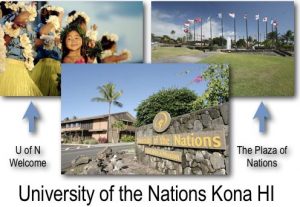 In 1989 as a family we did something quite unusual – we gave away our business and most of our belongings, reduced our “stuff” to eight suitcases, pulled the children out of school, invested all the money we had on airline tickets and travelled to Hawaii for a training course. We planned to visit for three months, but stayed for nine years as volunteers with no visible signs of income. People back home thought we were a little different. During that time we became international people, travelling to 20+ countries and living with people from over 100 cultures.
In 1989 as a family we did something quite unusual – we gave away our business and most of our belongings, reduced our “stuff” to eight suitcases, pulled the children out of school, invested all the money we had on airline tickets and travelled to Hawaii for a training course. We planned to visit for three months, but stayed for nine years as volunteers with no visible signs of income. People back home thought we were a little different. During that time we became international people, travelling to 20+ countries and living with people from over 100 cultures.
I brought this global perspective and appreciation for people from different cultures and languages to my job and in the last eight years I have travelled internationally at least once a year, via scholarships or external funding. I have extensive international networks with academics and elearning professionals from around the world. This has led to many presentations (some keynotes) and ambassadorial representation on behalf of the University.
 Online Learning has always had a foundational principle that the pedagogy should drive the technology and not the other way around. So pedagogical benefits (PBs) should always be defined when thinking about technology. This approach was applied to an emerging pedagogy of synchronous learning events using what is referred to as virtual classrooms. They are now known as Webinars. I was instrumental in leading the way in Australia for some of the very first multiple venue presentations (MVPs) in Higher Education. MVPs are when multiple face-to-face seminars connect using web based technology to have a live event. Two different MVP events that were my idea, I produced and managed, stand out as evidence of the breadth of impact that was achieved across Australia and New Zealand.
Online Learning has always had a foundational principle that the pedagogy should drive the technology and not the other way around. So pedagogical benefits (PBs) should always be defined when thinking about technology. This approach was applied to an emerging pedagogy of synchronous learning events using what is referred to as virtual classrooms. They are now known as Webinars. I was instrumental in leading the way in Australia for some of the very first multiple venue presentations (MVPs) in Higher Education. MVPs are when multiple face-to-face seminars connect using web based technology to have a live event. Two different MVP events that were my idea, I produced and managed, stand out as evidence of the breadth of impact that was achieved across Australia and New Zealand.
 Early in 2005 EDUCAUSE published an online book Educating the Net Generation edited by Dr. Diana Oblinger, then VP (now President) of EDUCAUSE. I made a bold request to Diana to give a MVP, in which she would present to a seminar event here at Adelaide and other locations around Australia. Diana was delighted and increased the event to three webinars.
Early in 2005 EDUCAUSE published an online book Educating the Net Generation edited by Dr. Diana Oblinger, then VP (now President) of EDUCAUSE. I made a bold request to Diana to give a MVP, in which she would present to a seminar event here at Adelaide and other locations around Australia. Diana was delighted and increased the event to three webinars.
I sent an email to universities around Australia and within 36 hours 14 different universities across Australia had accepted. This was a great success, groundbreaking as a webinar design and won a LOLA (Live Online Awards), Creativity in Synchronous Design: creative online activity, technique or approach.
The ‘Meginar’ : Harnessing the Power of eLearning in HE
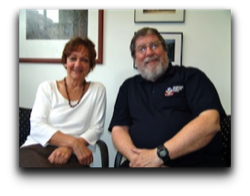 But there is more, in 2006 I approached Professor Diana Laurillard of the London Learning Lab at the University of London about leading a MVP to university locations across Australia and NZ. Diana has an international reputation as being a thought leader in elearning in Higher Education.
But there is more, in 2006 I approached Professor Diana Laurillard of the London Learning Lab at the University of London about leading a MVP to university locations across Australia and NZ. Diana has an international reputation as being a thought leader in elearning in Higher Education.
This time 41 university locations happily agreed and we had over 400 learners online simultaneously for the event across many time zones.
Diana titled it “Harnessing the Power of E-Learning in Higher Education” and was happy to take my lead in the learning design. She responded very positively to my request of only 10 mins of didactic content delivery (lecture) at a time then an interaction. We used PowerPoint slides with fields for feedback content from the audience and had timed and structured interactions and discussions every 10 mins.
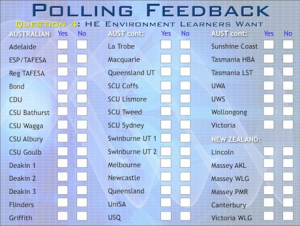 I called it the “Meginar” because of its size and I think this is still the benchmark in educational webinars. In the lead up to the event I ran training sessions for the location leadership teams and we planned how to gather the knowledge. I had the privilege of meeting Diana face-to-face when I visited and presented at the London Knowledge Lab a year later.
I called it the “Meginar” because of its size and I think this is still the benchmark in educational webinars. In the lead up to the event I ran training sessions for the location leadership teams and we planned how to gather the knowledge. I had the privilege of meeting Diana face-to-face when I visited and presented at the London Knowledge Lab a year later.
Then came Podagogy and Podcasting
I couldn’t help but be excited about Diana Oblinger’s invitation to travel to the huge EDUCAUSE conference in the USA in 2005 and be part of the first podcasting team. Would you believe someone was paying me to go to Orlando Florida and walk the conference halls talking to innovative people, from all over the world, about their exemplar practice in elearning … someone has to do it I guess. An unexpected and exciting outcome of this trip to EDUCAUSE was the development of a new model of educational podcasting. The aim of this model is to publish podcasts of the insights and experiences of participants at the conference. These podcasts will provide a valuable resource for further conference promotion and for use as learning objects.
I also met Assistant Prof Randy Meredith from Spring Arbor University (that’s us on the floor). Randy was the inventor of the word “Podagogy” (pedagogy on iPods) and who had developed a pedagogical model for educational podcasting. We have jointly presented on this subject.
This passion for podcasting was a driver to lead podcasting programs to capture the knowledge and wisdom of Australian educational conferences in 2006 through 2011.
In 2007, I teamed up with Dr. Ian Green from the School of Education and we have talked to hundreds of academics from around the world about their research their teaching and their student outcomes. All the time representing the University of Adelaide and developing networks. The highlight was podcasting Macworld USA for three successive years for the Apple University Consortium. (AUC)
A Profile of Success on the Apple Website … now that’s cool
To someone who uses a MAC, to be featured on the Apple website for your work is truly heady stuff, so when in 2007 Apple Australia published a profile on their website called “Breaking with tradition – profiles in success: The University of Adelaide”, it was truly personally satisfying. This profile has been archived and is available here. This article was all about Educational Podcasting at conferences.
This pioneering work in podcasting was the core of my application to be an Apple Distinguished Educator (ADE), which was awarded in 2009. Being an ADE has given me access to a creative community of educators throughout the world, who have as their main KPI … “making cool stuff”. Joking aside, it gives me access to some of the most innovative use of technology for learning available, and has been a source of great ideas for the last seven years.
And Now Padagogy
Wow, pedagogy for iPads. When I thought of that word I immediately registered the domains. I saw the possibilities and it is quickly becoming an often-used word and accepted concept. Ian Green and I were already planning iPad workshops when the Faculty of Science Initiative went public in 2010. The “Padagogy 101 & 201: iPads in HE” workshops were suddenly a lot more important that we thought, and needed to address a more strategic need. As ADE’s we have the ear of Apple and it has helped us continually borrow iPads from them for use in the workshops (20-40 at a time). We have introduced over 300 staff and students to learning and teaching on these iconic devices, here at Adelaide and now as a roadshow for such universities as QUT, UQ and ACU in Brisbane. But wait there’s more – we have interest from universities in Sydney, Christchurch and Hong Kong.
The University is on the cutting edge and we are helping them stay there. We are teaching a wide spectrum of staff and students. The sort of “buzz” about these cool learning tools can be seen in the faces of the Vet Science students at the Roseworthy Campus – it is such a joy to show them the possibilities.
We know these “Padagogy” workshops are successful, when we get this sort of feedback. eg, 50% of the workshop audience, which were faculty of ACU, gave us 10 out of 10, and another 32% 8-9 out of ten, and we get comments like:
“Well presented, excellent ideas for HE, demonstrated experiences with idevices and knowledge of web 2.0 education for teaching and learning.”
The Faculty of Science’s giving of iPads to their first year students created a lot of interest. Radio Adelaide did a radio interview where Ian Green and I were asked about iPads and their effect on learning and teaching at the University of Adelaide.
Learning Design using Learning Activity Management System (LAMS)
If you consider the “Continuum of Shift” applied to learning management systems, at one end you have a content centric tool like Blackboard, then you find Moodle in the middle, and at the other activity centric end you have LAMS being used for interactive learning sequences and constructivist design in teaching. LAMS provides teachers with a highly intuitive visual authoring environment for creating sequences of learning activities. These activities can include a range of individual tasks, small group work and whole class activities based on both content and collaboration. I believe this is the most useful tool for developing strong pedagogy in learning design we have available. When I tell people in workshops “it is Learning Design, not for dummies, but time strapped academics”. I usually have their attention.
I discovered this wonderful new software tool in 2005 and have been tracking its development since. In June 2011 I organized a visiting teacher from Macquarie University (home of LAMS) to run two workshops on LAMS and 50 academics were very interested. We could only accept 10 into a trial for the rest of 2011 and the results are coming in. There is a ground swell for use in 2012.
Please read the typical student feedback from the project so far.
Assoc. Prof. Mike Keller of the School of Agriculture Food and Wine reported back to his students: “Your responses indicated that the use of innovative teaching techniques was effective. Out of 57 comments that mentioned LAMS directly or indirectly, 44 were favorable and 13 were either unfavorable or equivocal. Overall, your participation in the trial and SELT responses to it gave me encouragement to use it again.”
Dr. Laura Hardefelt from the School of Animal and Veterinary Science developed an innovative learning sequence using scenario-based learning. Laura is intending to use 24 of these “virtual patients” in her course next year. Colleagues beta tested this. A representative comment was: “The student has to come up with problem lists and differentials based on the case and their own reading. This will begin the step from academia into action, translating theory into practice. This is an excellent bridging tool, well done.”
Ms Tanya Wittwer, Lecturer in Public Health, used LAMS with a practical class of 80 students. “The students were very positive about using the LAMS sequence, with the most common comment being that it provided an interactive experience and was easy to use. Many also said it was fun.”
It is not often that you get to help with the development of a new Dental School 11,000 kms away. The Sharjah team here in Adelaide built one from the ground up and covered every single aspect from feasibility study to accreditation preparation, facilities design, staffing plan, recruitment and training. In the early days of the project I figured out how to create a way for the team to demonstrate the connectivity and integration of the curriculum. I developed a website like connected curriculum map that could be used when explaining the University of Adelaide Bachelor of Dentistry (BDS). Prof. Viv Burgess of the School of Dentistry explained the significance of this hyperlinked map:
“ Starting from the earliest stages the availability of an electronically mapped model of the Adelaide BDS Curriculum proved to be an important advantage when presenting to stakeholders and especially when planning the development of the curriculum material. In the later years of the Project at a major international conference other Universities attempting similar work commented that this was an advanced capability and sought advice on the process.”
Viv Burgess
 I introduced the LTA concept (Low-Threshold Applications and Activities) to the online team back in 2003 taught by a colleague in the USA. It has become foundational to everything we do. From the TLT website “A LTA is an activity or application of information technology that is reliable, accessible, easy to learn, non-intimidating and incrementally low-cost in time, money, and stress”. Everything I do, (in fact Online Learning as a team does), must pass through this grid. That is all about accessibility, equity and inclusiveness. Every pedagogy and technology needs to stand up to scrutiny like: Will as many people as possible be able to access it? Is it available on multi computer platforms? If we are going to teach this way, is it equitable to all students? We can’t set up a “have/have not” divide. This is particularly important in classroom situations when technology like iPads are being used, where only a small number of students may have them. THE LTA concept ensures that the ‘tools’ are selected to fit the context of each unique learning environment situation.
I introduced the LTA concept (Low-Threshold Applications and Activities) to the online team back in 2003 taught by a colleague in the USA. It has become foundational to everything we do. From the TLT website “A LTA is an activity or application of information technology that is reliable, accessible, easy to learn, non-intimidating and incrementally low-cost in time, money, and stress”. Everything I do, (in fact Online Learning as a team does), must pass through this grid. That is all about accessibility, equity and inclusiveness. Every pedagogy and technology needs to stand up to scrutiny like: Will as many people as possible be able to access it? Is it available on multi computer platforms? If we are going to teach this way, is it equitable to all students? We can’t set up a “have/have not” divide. This is particularly important in classroom situations when technology like iPads are being used, where only a small number of students may have them. THE LTA concept ensures that the ‘tools’ are selected to fit the context of each unique learning environment situation.
My global perspective and experience working cross culturally has helped. An example of helping a diverse cohort of students has been the Introductory Academic Program (IAP) trial, which is helping students who have English as a Second Language (ESL). I was instrumental in setting this up using Wimba Voice Tools to add audio feedback to the marking of assignments. The academic reported the positive response from students who could now listen to the teacher talk to them personally with feedback: it was easily seen in their faces and behaviour. It was the success of this pilot that convinced Professor Geoff Crisp to buy the license for Wimba for three years.
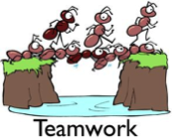 Another example of reaching out to diverse cohorts of students is the ILM’s. Students who cant make it to lectures and struggle with keeping up in face-to-face teaching love this pedagogical approach. The ability to revisit the curriculum and the use of checkpoints (short formative quizzes and interactions) adds so much more than just listening to lectures and watching PowerPoints. ILM’s empower the fringes of the student cohort. We have seen evidence of this when students send emails to lecturers saying:
Another example of reaching out to diverse cohorts of students is the ILM’s. Students who cant make it to lectures and struggle with keeping up in face-to-face teaching love this pedagogical approach. The ability to revisit the curriculum and the use of checkpoints (short formative quizzes and interactions) adds so much more than just listening to lectures and watching PowerPoints. ILM’s empower the fringes of the student cohort. We have seen evidence of this when students send emails to lecturers saying:
“I just wanted to say that i thought it (ILM) was FANTASTIC, and it has helped me so much with understanding the concept of connective tissue and also enforced what I learned last week on epithelial tissue. Thank-you”
– BOH I student, 2008.
Notification of Success
Allan received notification of being chosen for the award on 2nd November 2011 from Prof. Pascale Quester Deputy Vice-Chancellor and Vice-President (Academic)
 Award Notification Excerpt: “The Teaching Awards and Grants Committee was very impressed by your years of commitment to supporting the teaching staff at the University of Adelaide to achieve positive student learning outcomes, Your innovative and passionate approach to the development and implementation of varied media teaching tools is clearly respected by both local and international colleagues, You are to be commended for your contribution to the University”.
Award Notification Excerpt: “The Teaching Awards and Grants Committee was very impressed by your years of commitment to supporting the teaching staff at the University of Adelaide to achieve positive student learning outcomes, Your innovative and passionate approach to the development and implementation of varied media teaching tools is clearly respected by both local and international colleagues, You are to be commended for your contribution to the University”.
Application Package
Complete Award Application as One PDF lodged 22nd Sept 2011
Download
Reference from Line Manager for 8 years
Reference Excerpt: “I was Allan’s line manager for 8 years when I was the Director for the CLPD. Allan is able to convert technological innovations into effective learning experiences for students. It is not just the shallow use of technology to smarten up traditional teaching methods; it is a genuine redesign of the learning activities so that students are able to develop deep and meaningful capabilities that can be applied to future learning opportunities”.
Prof. Geoff Crisp
From Prof. Geoff Crisp
Complete Document: Download
Reference from Colleagues
Reference Excerpt
“Allan’s innovations have enabled us to develop teaching methodologies that have bridged the issue of equity and accessibility. He strategically encouraged us to develop interactive learning modules (ILMs) that have enabled all students, in a diverse cohort like ours, to learn in a way and time that suits them. These modules prepare students regardless of their social, educational and/or work backgrounds to come to class equipped with the same level of pre-existing knowledge and skills sets to promote a student constructed active learning paradigm. These ILMs have transformed the way we teach and the way our students prefer to learn. Over the years, and under Allan’s constant guidance, our ILMs have developed into multi media interactive packages that have changed the way our students engage with us, their peers and the discipline of oral health”.
Sophie Karanicolas and Cathy Snelling
From Ms Sophie Karanicolas & Ms Cathy Snelling.
Complete Document: Download
TEXT 03
TEXT 04
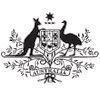




- Mobile: +61 402 468777
- eMail: [email protected]
- Skype: allansyd
- Twitter: @allanadl
- Wechat: allanadl







